Volume 2012, Issue 23
Journal of the Japan Lingual Orthodontic Association
Displaying 1-11 of 11 articles from this issue
- |<
- <
- 1
- >
- >|
-
2012 Volume 2012 Issue 23 Pages 3-12
Published: 2012
Released on J-STAGE: July 17, 2014
Download PDF (1257K) -
2012 Volume 2012 Issue 23 Pages 13-22
Published: 2012
Released on J-STAGE: July 17, 2014
Download PDF (1318K) -
2012 Volume 2012 Issue 23 Pages 23-30
Published: 2012
Released on J-STAGE: July 17, 2014
Download PDF (450K) -
2012 Volume 2012 Issue 23 Pages 31-42
Published: 2012
Released on J-STAGE: July 17, 2014
Download PDF (3276K) -
2012 Volume 2012 Issue 23 Pages 43-53
Published: 2012
Released on J-STAGE: July 17, 2014
Download PDF (959K) -
2012 Volume 2012 Issue 23 Pages 54-64
Published: 2012
Released on J-STAGE: July 17, 2014
Download PDF (4862K) -
2012 Volume 2012 Issue 23 Pages 65-73
Published: 2012
Released on J-STAGE: July 17, 2014
Download PDF (1069K) -
2012 Volume 2012 Issue 23 Pages 74-76
Published: 2012
Released on J-STAGE: July 17, 2014
Download PDF (814K) -
2012 Volume 2012 Issue 23 Pages 77-138
Published: 2012
Released on J-STAGE: July 17, 2014
Download PDF (10952K) -
2012 Volume 2012 Issue 23 Pages 139-146
Published: 2012
Released on J-STAGE: July 17, 2014
Download PDF (561K) -
2012 Volume 2012 Issue 23 Pages 147-150
Published: 2012
Released on J-STAGE: July 17, 2014
Download PDF (424K)
- |<
- <
- 1
- >
- >|
